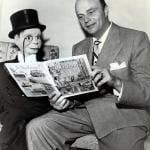of two very different books, which both riff on events in the living memory of the authors.
Stephen King, Hearts in Atlantis. This book tells you up-front that it will be about The Sixties–the mythical drowned continent of the title. And although I found this collection of linked novellas unsatisfying, its response to The Sixties surprised me, and it’s the book’s greatest strength. Because the major emotional key King touches here is guilt.
The first novella, “Low Men in Yellow Coats,” is a portrait of a young boy growing up in the early ’60s, in a recognizably King-like small town, with the kind of mother you hope to find not at home. This mother is a great creation. She understands one big thing in life, and that’s that it is precarious. Her love and protectiveness toward her son come out as criticism and suspicion.
This section introduces several characters we’ll need later, but its role in the collection may be to show the grime, economic struggle, and violence against women which pervade the adults’ world and seep into the children’s. King is so good at making the early ’60s at once an idyll and a site of fear and suffering; he somehow balances the sweetness of childhood friendships, games, and discoveries with the unhappiness and helplessness which often characterize childhood. And not all of those discoveries are sweet.
The shadows over these children’s lives are not the shadows of The Sixties that he’ll explore later. They’re linked–there’s a way in which all violence in this book is the same violence. But King really does capture the feeling that this is the before and the later novellas are set in an after. The Sixties are a real dividing line, not simply the usual wrack of wickedness and folly wearing different clothes.
One group of this story’s many villains is the gang of Catholic-school bullies who harass and attack the public-school kids. Their Catholicism is really hammered on (there’s even a snide comment about how their families have too many kids!); King is going somewhere with it, though I don’t know that his ultimate purpose justifies the stereotype-laden portrayal here.
The second novella, “Hearts in Atlantis,” is by far the strongest. It’s a strange tale of scholarship students who need to maintain their grades in order to keep their draft exemptions, but nonetheless get sucked in to an addictive card game. There’s some sentiment here, especially at the end, but mostly this story is about being baffled by what you’re doing. We do things we know to be wrong, to be cruel or terrifyingly stupid, we drift into them or suddenly find ourselves in the middle of them. It’s a story about becoming a spectator to history while everyone around you is becoming a participant.
In terms of The Sixties, one thing I noticed is that although King himself very very clearly believes the war in Vietnam was at best a mistake full of crimes, at worst a crime from the start… when his characters try to argue against the war their arguments are desultory, lazy, amoral. “Pepsi F—in Cola” is making money off the war; who cares if the Communists kill Catholics (there we are again! only right-wingers like Catholics) since after all, “We stood back and let the Nazis kill Jews for six years”; if the domino theory is right and the Communists can win across Asia, “maybe they deserve to win.” It’s pretty clear that nobody making these arguments really believes them, which is good because they’re terrible f—-in arguments. I genuinely loved that King let his own views (seriously, I’d be shocked if I’m wrong about this) be represented by such shameful posturing. It’s a confident move which places fidelity to theme above desire to propagandize.
Both the slow-moving horror of the card game and the climactic Fall of Stoke Jones are fantastic, memorable pieces of writing. Hold on to that, because the rest of this book is not great.
“Blind Willie” is both the low point artistically and the moment when King’s theme fully emerges. One of those Catholic schoolboys has become a tortured Vietnam veteran who won’t go to confession, but does a daily self-imposed “penance” which also, coincidentally, nets him a lot of cash. It all feels cartoonish, and while I guess it is ok that my religion is apparently King’s keyboard shortcut for “guilt and repentance,” I believed zero of this tale. “Why We’re in Vietnam” is more deeply-imagined, more true to human life, and so I’m more willing to accept it even though its climax is a rain of consumer goods from the sky, which is not the subtlest possible answer to the question in the title. And then the final section ties the threads together in a reunion of the two eleven-year-olds at the center of “Low Men in Yellow Coats.” This reunion is made possible only by supernatural intervention: not divine, exactly, but still a kind of inbreaking from above, via the utterly Kinglike means of a mysterious baseball glove.
In this book about The Sixties, the civil rights movement is completely absent. There are no black people. That isn’t a criticism; this is about one kind of The Sixties, a story worth telling even if there are other The Sixtieses out there. But it was striking to read King’s underbelly-Americana and then move immediately on to Charles W. Chesnutt’s Marrow of Tradition.
Marrow is a novel teetering between melodrama and allegory, about the Wilmington, NC Massacre of 1898, in which white citizens seeking to claw back the gains of Reconstruction ravaged their town’s black community and committed “the only coup d’etat in American history.” It’s as wrenching to read as you might expect. It has the authentic 19th-century teacherly cadence where nobody minds having the events interpreted for them–although Chesnutt often injects irony into this didactic tone. There’s a subtheme about the making of historical memory. What goes in the newspaper? Which records are kept, which hidden, and which destroyed? This book is an attempt to ensure that people remember what really happened, not what the remaining documents would show. And yet the book is about black testimony disregarded and black communities, the havens of memory, destroyed. So there’s a desperate urgency to the novel, published in 1901 by a writer whose relatives were survivors of the violence in Wilmington.
One of the true cliches about American literature is that it’s about the forced encounter with the submerged past, in a country which pretends to have only a future. (I may as well say that I re-read The Great Gatsby right around this time too. That book is a lot better than I remembered!) In Marrow, as in real life, the bodies of light-skinned black people told a story which the documents governing their legal inheritance denied. Here, two women look shockingly alike–shocking because one is a white inheritor, and the other is a black pauper. Everyone knows what their resemblance means, but it’s possible to use law and prejudice to render that truth powerless, unspeakable. This novel knows that the hidden truths which come to light at the climax could easily have remained buried forever. In many families–including Chesnutt’s own–there never was a full reckoning.
People say that allegory is a hokey old genre but how many of us find that our real lives bear its traces?












